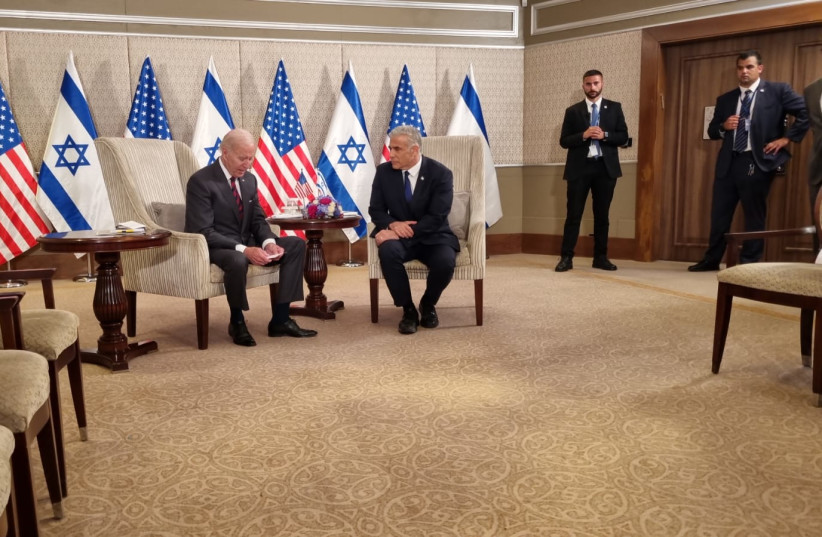Is a blue economy the future of Mideast-Asia partnerships? - opinion
Blue economy is an emerging concept for ocean governance that harnesses the economic capabilities of oceans in environmentally sustainable ways.

As tensions between the United States and China flare in Asia, Middle East-Asia cooperation continues to develop, offering a different, more positive outlook. A creative idea that has the potential of bringing cooperation to new levels is one focused on blue economy. This is an emerging concept for ocean governance that harnesses the economic capabilities of oceans in environmentally sustainable ways. It is broadly defined as all economic activities related to oceans and seas, which constitute 71% of the earth’s surface and covers a wide range of sectors and issues.
The blue economy could address some major regional issues of concern, including transformation to a knowledge-based economy, climate change, food security, and economic cooperation to expand regional and global connectivity.
Amid an uptick in mini lateral partnerships, like the I2U2, involving India, Israel, the US and the United Arab Emirates (UAE), a blue economy agenda could be a game changer. It becomes pertinent as the UAE, for example, has signed Comprehensive Economic Partnership Agreements with India, Israel and Indonesia during the first half of 2022, and is negotiating similar agreements with at least another six countries.
The UAE is also broadening economic engagement with China, Japan and South Korea, among others. Setting a blue economy agenda as a basis for a mini lateral block among the new middle powers on their own or in conjunction with the superpowers is likely to accelerate such agreements.
Several Western countries, including the United States and, as well, China, are investing substantial resources into developing blue economy strategies. Even India introduced SAGAR (‘Security and Growth for all in the Region’ or meaning “ocean” in Hindi) in 2015, to focus on cooperative measures for the sustainable use of oceans, especially in the Indian Ocean region.

Areas primed for a blue economy
Some pressing areas where a blue economy could foster cross-regional Middle East-Asia cooperation include:- Climate change: The potential of microalgae for carbon sequestration has proven to be 400 times more than trees. An acre of microalgae can absorb up to 2.7 tons of CO2 per day. Removing the cost of land and freshwater usage, this becomes an economically-viable and environment-friendly option for countries aspiring for carbon neutrality.
Japan, Israel and the UAE
AS DEMAND for Middle East energy remains high, Japan, Israel and the UAE can use their technological and infrastructure strengths to improve real-time detection and risk analysis of maritime movements. Strengthening real-time risk assessment based on AI capabilities, and human and machine interaction, a joint task force could define the risks, examine existing tools that analyze the risks and improve current solutions. As water becomes scarce, desalination projects also fall within the scope of a blue economy.- Marine urbanization: Using AI and robotics can help run energy self-sufficient floating marine platforms for unmanned microalgae cultivation for food security, CO2 sequestration and deep-sea excavation for energy, rare earth minerals and scientific research.
- Global connectivity: The bulk of global trade uses sea routes, which ensures employment for millions. Among the most significant economic consequences of COVID-19 and the Russia-Ukraine War is disruption of vital supply chains. Hence, there is a vested interest in reestablishing and maintaining functioning trade routes and supply chains. This requires modern governance tools for complex systems, including marine spatial planning.
A blue economy is the natural choice
All these make a blue economy the perfect platform for creating a cross-regional economic connectivity alliance that can be expanded worldwide. Israel, too, is strengthening its blue economy capabilities, particularly in research and technology development. Its cooperation with the Gulf following the Abraham Accords, as well as its relations with India, Japan, South Korea and others in Asia are accelerating.The UAE and Israel are in a unique position to establish, together with key partners across the Middle East and Asia, a mini lateral fund for a blue economy that includes financing initiatives, joint developments and the implementation of solutions. This will bring together the know-how and services of the public sector, private sector, think tanks and academia in a unique partnership to form an out-of-the-box relationship to tap the potential of two-thirds of the planet’s resources.
Oceans can be an area of great competition or cooperation. The UAE, Israel, India, Japan and other partners in Asia and beyond, can pave the way towards reaping the rewards of partnerships, thus avoiding the pitfalls of intensifying geopolitical rivalries.
Mohammed Baharoon is director-general of B’huth (Dubai Public Policy Research Centre). Dr. Gedaliah Afterman is head of the Asia Policy Program at the Abba Eban Institute for International Diplomacy at Reichman University (IDC Herzliya), in Israel. Dr. Narayanappa Janardhan is senior research fellow at Anwar Gargash Diplomatic Academy, in Abu Dhabi, and non-resident fellow at Arab Gulf States Institute, in Washington.






